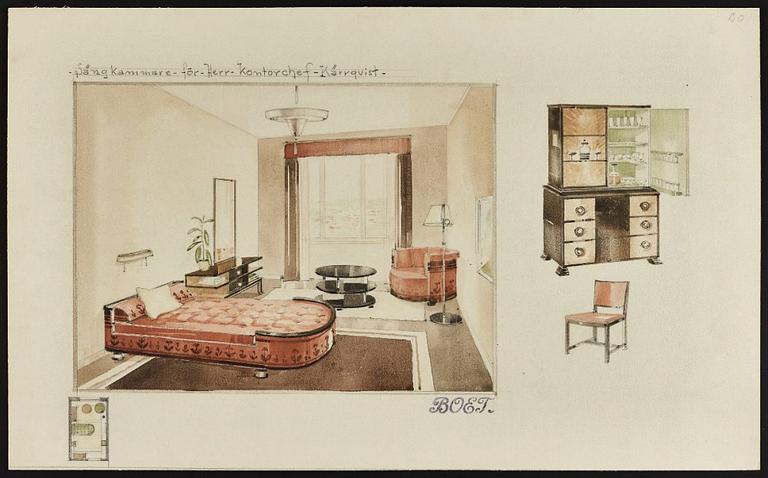Otto Schulz
a pair of armchairs, Boet, Gothenburg 1930s-40s.
Legs in black lacquered wood, upholstered in light bouclé. Length 83 cm, depth 80 cm, height 68 cm, seat height 36 cm.
Renovated and reupholstered, legs with minor wear.
Literature
Otto Schulz (ed.), "Boet: Månadsskrift för Hemkultur, Hantverk och Konstindustri", 1934-35, model illustrated p. 203.
The model is also illustrated in a watercolour titled "Sängkammare för Kontorschef Kärrkvist" (Bedroom for Office Manager Kärrkvist) in the Otto Schulz collection preserved at the Röhsska Museum in Gothenburg, inventory number RKM 37:250-1970.
Designer
Otto Schulz was a German-born designer and architect who spent the majority of his life working in Gothenburg, Sweden. In 1920, Schulz founded the company Boet together with Adolf Nordenberg, which became a highly influential interior and furniture manufacturer. Schulz's daring aesthetics have a multifaceted character that has contributed to important elements in both the Swedish Grace and Swedish Modern concepts. Schulz also published the magazine Boet, which, along with the store and business, helped to cement his role as central in interior design contexts. Some of Schulz's characteristics included developing techniques for which he took out patents, such as Bopoint, Bosaik, and Botarsia, all of which contributed to the furniture's distinctive aesthetics and quality.
Read more

















































